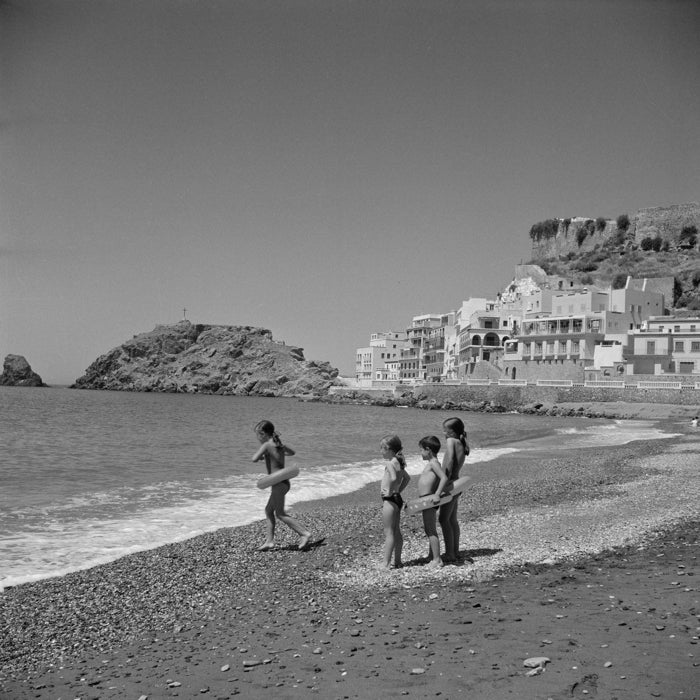The image of a deserted beach on Spain's Costa Tropical taken just before the tourist boom in Almuñécar
The photo from the 1960s shows four children playing on the shore in a deserted space with a few low buildings 'watching' behind them
Almuñécar on Granada's Costa Tropical has, for decades, been one of the province's most popular tourist destinations with thousands of visitors from the rest of the province, different parts of Spain and from all over the world flocking to the coastal town.
It was during the 1970s that it started to grow in popularity as the tourist boom started to take hold around the country. Before, the appearance of the town was very different and the summer visitors did not reach the thousands, nor did it multiply its population by four times during the summer months.
That is the image shared by @granadaoldpics1. "Almuñécar shortly before "exploding" in tourist terms," he said of an image that Francisco Ariza, in charge of this account on X, places in the 1960s. Four children look at the sea before going in for a swim on a deserted beach with a few low buildings in the background. Today, the image of this beach is quite different: rows of beach umbrellas, hundreds of beachgoers and a long succession of buildings on the hill.
Progress thanks to tourism
The Velilla tower, which watches over El Tesorillo beach and which many people do not know is a private property, is still standing. El Tesorillo has even lost the independence it once enjoyed because of the sea, separated from Velilla by the rocks. Now it can be reached on foot without having to get your feet wet walking along the shore.
But the great transformation of Velilla began when, in 1975, the mountain was opened up so that this area could be connected to the rest of Almuñécar without the need to go out onto the road. The twenty or so houses belonging to families such as the González de Vega, the Ruiz-Alba, the Gómez-Moreno or the Bueno López, who enjoyed the tranquillity of the area, were gradually swallowed up by the large blocks of flats that today flood the seafront.
On the other side, San Cristóbal and its Peñón have not been spared the changes and nowadays it is an area of hotels and restaurants to serve the thousands of visitors who flock there every summer.
Many hotels have opened and closed over the years, including in 2001 when Hotel Meliá (now Almuñécar Playa) opened, the Bahía Tropical and the Victoria Playa. Nowadays, between hotels, hostels and guesthouses, Almuñécar has 38 holiday accommodation options and around 70% of its economic activity is directly related to tourism, according to data from the town hall.
The best example of the evolution of Almuñécar is the population change in the town. In 1970 there were 13,294 people registered there. According to data from Spain's INE national statistics institute in 2024 there were 27,699 people registered. The town has doubled its population in 50 years, but, in the summer months these figures soar. It can multiply its population by four or five times, up to 133,000 inhabitants.


Comentar es una ventaja exclusiva para registrados
¿Ya eres registrado?
Inicia sesiónNecesitas ser suscriptor para poder responder.
Necesitas ser suscriptor para poder votar.